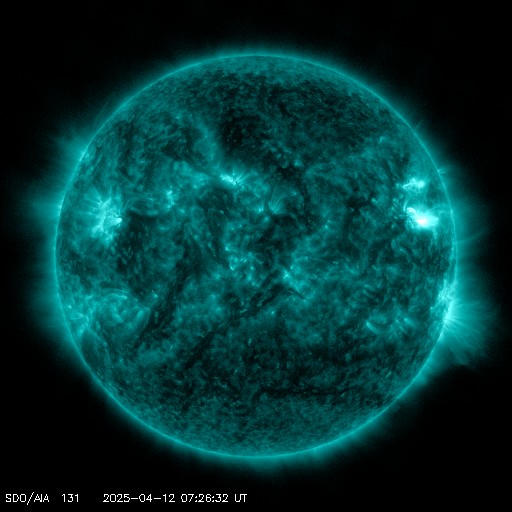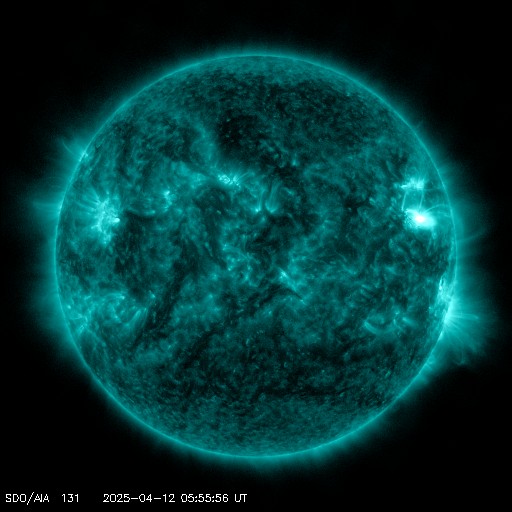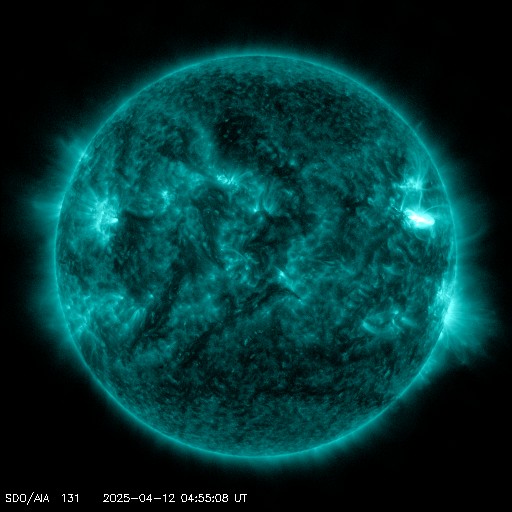Viewing archive of Monday, 20 October 2003
Solar activity report
Any mentioned solar flare in this report has a scaling factor applied by the Space Weather Prediction Center (SWPC). Because of the SWPC scaling factor, solar flares are reported as 42% smaller than for the science quality data. The scaling factor has been removed from our archived solar flare data to reflect the true physical units.
Report of Solar-Geophysical Activity 2003 Oct 20 2200 UTCPrepared by the NOAA © SWPC and processed by SpaceWeatherLive.com
Joint USAF/NOAA Report of Solar and Geophysical Activity
SDF Number 293 Issued at 2200Z on 20 Oct 2003IA. Analysis of Solar Active Regions and Activity from 19-2100Z to 20-2100Z
Solar activity has been low to moderate. Region 484
(N06E41) has increased again to 1500 millionths with over 56
sunspots and a strong Beta-Gamma-Delta magnetic configuration. It
has produced several C-class flares and a long-duration M-class
flare at 0722 UTC. Further analysis of a CME which occurred 18
October around 1830 UTC indicates that a faint portion was
Earth-directed.
IB. Solar Activity Forecast
Solar activity is expected to be low
to moderate. There's a slight chance for another isolated X-class
flare and an even lesser chance of proton activity from Region 484.
IIA. Geophysical Activity Summary 19-2100Z to 20-2100Z
The geomagnetic field has been at low to minor storm levels. Another
favorably positioned coronal hole is perpetuating the high speed
solar wind stream, and is continuing to keep the geomagnetic field
disturbed. The interplanetary magnetic field has settled to a low
value of around 8 nT, which is keeping the overall disturbance at a
maximum of minor storm levels. The greater than 2 MeV electron flux
at geosynchronous orbit reached high levels today.
IIB. Geophysical Activity Forecast
The geomagnetic field is
expected to be at active to minor storm levels for the next 24
hours, dropping to mostly low with a chance for isolated periods of
minor storming during day two. On day three, the faintly
Earth-directed CME from 18 October should impact the magnetic field,
and is likely to increase activity to mostly active to minor
storming, with a chance for an isolated period of major storming.
III. Event Probabilities 21 Oct to 23 Oct
| Class M | 70% | 70% | 70% |
| Class X | 15% | 15% | 15% |
| Proton | 10% | 10% | 10% |
| PCAF | green | ||
IV. Penticton 10.7 cm Flux
Observed 20 Oct 135 Predicted 21 Oct-23 Oct 130/130/130 90 Day Mean 20 Oct 115
V. Geomagnetic A Indices
Observed Afr/Ap 19 Oct 022/032 Estimated Afr/Ap 20 Oct 020/025 Predicted Afr/Ap 21 Oct-23 Oct 025/030-015/020-020/020
VI. Geomagnetic Activity Probabilities 21 Oct to 23 Oct
| A. Middle Latitudes | |||
|---|---|---|---|
| Active | 35% | 35% | 35% |
| Minor storm | 30% | 30% | 30% |
| Major-severe storm | 20% | 10% | 20% |
| B. High Latitudes | |||
|---|---|---|---|
| Active | 25% | 30% | 30% |
| Minor storm | 25% | 20% | 20% |
| Major-severe storm | 15% | 10% | 10% |
All times in UTC
Current data suggests there is a slight possibility for aurora to appear at the following high latitude regions in the near future
Whitehorse, YTAnchorage, AK, Fairbanks, AK, Juneau, AK
Latest news
Latest forum messages
AR 4055 37Filaments and prominences 2CME 16Filaments and prominences (old topic) 756Unspecified geomagnetic activity 2239
More topicsSupport SpaceWeatherLive.com!
A lot of people come to SpaceWeatherLive to follow the Sun's activity or if there is aurora to be seen, but with more traffic comes higher server costs. Consider a donation if you enjoy SpaceWeatherLive so we can keep the website online!

Latest alerts
07:39 UTC - Solar flare
Moderate M1.03 flare from sunspot region 4055
07:24 UTC - Radio Blackout
Minor R1 radio blackout in progress (≥M1 - current: M1.03)
06:09 UTC - Solar flare
Moderate M1.27 flare
05:51 UTC - Radio Blackout
Minor R1 radio blackout in progress (≥M1 - current: M1.16)
05:03 UTC - Solar flare
Moderate M1.19 flare
Space weather facts
| Last X-flare | 2025/03/28 | X1.1 |
| Last M-flare | 2025/04/11 | M1.0 |
| Last geomagnetic storm | 2025/04/06 | Kp5 (G1) |
| Spotless days | |
|---|---|
| Last spotless day | 2022/06/08 |
| Monthly mean Sunspot Number | |
|---|---|
| March 2025 | 134.2 -20.4 |
| April 2025 | 139.5 +5.3 |
| Last 30 days | 136.6 -3.5 |





